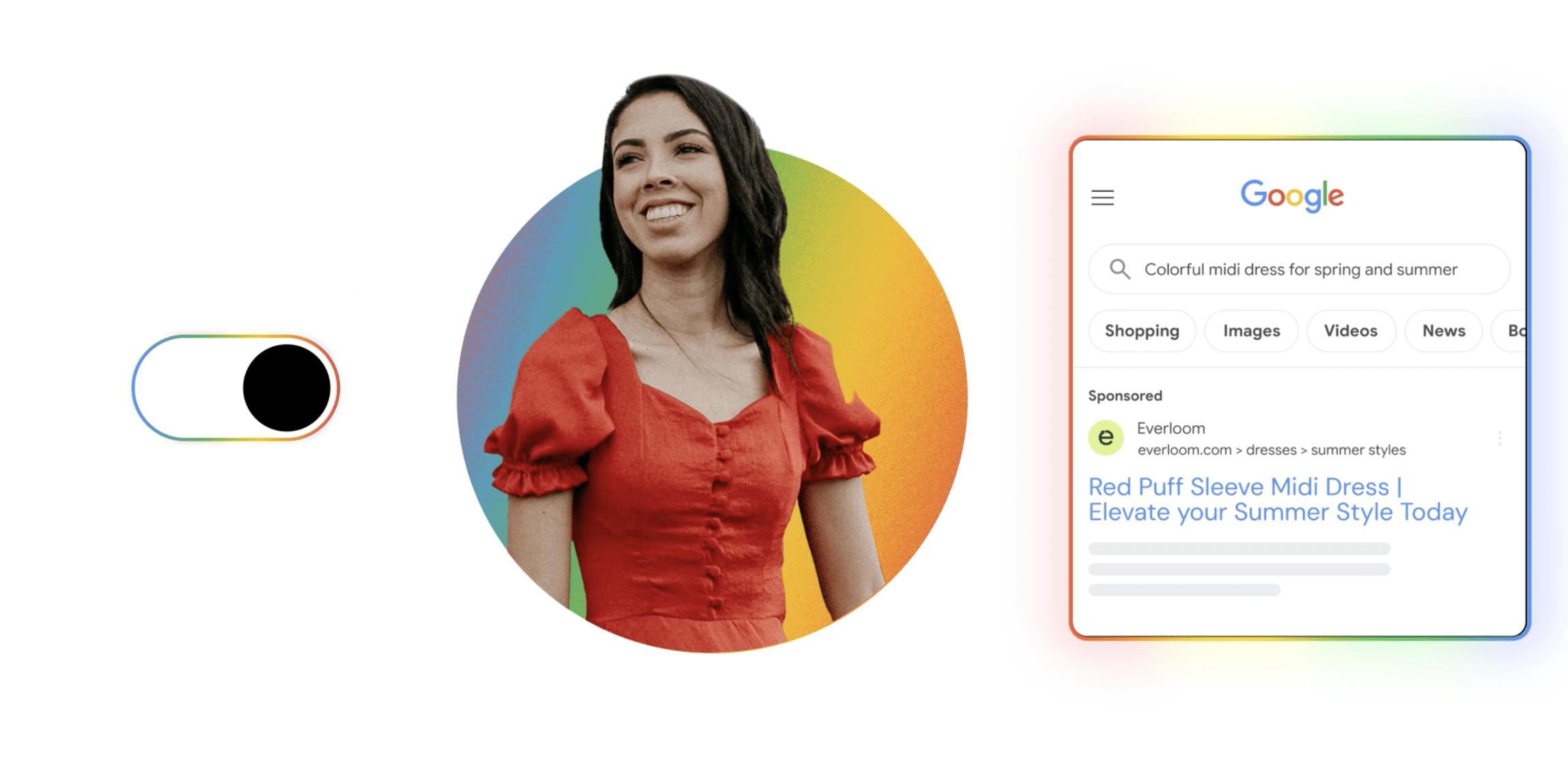A new version of Google’s AI Max search ad format is appearing in search results, and it offers important clues about where Google is taking search automation next. Based on what we are seeing, AI Max could reshape how search ads are built and how much creative control advertisers retain. Here’s the scoop:
What’s Changing with AI Max
AI Max is making more decisions that used to require human input, like choosing ad headlines and deciding which pages to promote.
One of the most visible changes: headline copy that extends far beyond standard character limits and appears to be pulled directly from content on the advertiser’s website, including blog posts. The longer headlines give the ads a more editorial look and feel. This is an indication that Google is prioritizing informational relevance and content richness.
Sitelinks are also being handled differently. While one sitelink may still reflect manually entered copy, others are being generated automatically and often direct users to the same blog content featured in the headline. In practice, this means AI Max is making real-time decisions about how to package and route users to what it determines is the most helpful content.
Equally important is what’s happening behind the scenes: final URL expansion. AI Max is dynamically selecting landing pages from across an advertiser’s site, often favoring content-rich destinations like blogs or help articles over traditional product or category pages. For advertisers used to managing the conversion path directly, AI Max makes it more important than ever to maintain a consistent brand experience across all pages that could surface in search.
How AI Max Differs from Search Max
AI Max is more than a rebranding of Search Max. It’s a step toward greater automation, deeper integration of generative AI, and a broader interpretation of what counts as relevant content.
Where Search Max focused on simplifying campaign setup and goal alignment, AI Max pushes further by generating headlines from existing web content, selecting alternative landing pages based on intent signals, and filling in creative gaps with machine-generated copy. These changes move the format beyond asset-based assembly and toward an AI-curated experience.
Another meaningful update is the new reporting capability within Google Ads that links search queries to the specific landing pages served by AI Max. This added visibility helps advertisers understand how Google’s systems are interpreting search intent and mapping it to on-site content. This insight is delivered in a format where the final URL is often determined by the platform, not the advertiser.
What We’re Seeing So Far
Performance feedback from early adopters has varied depending on campaign setup and content quality. Brands with strong, educational blog content are seeing it surface more prominently in AI Max campaigns. In some instances, that content is outperforming traditional product pages on engagement metrics.
In other scenarios, automated sitelinks pointing repeatedly to the same blog page have raised concerns about wasted space and a less-than-optimal user experience. And while longer headlines offer more descriptive context, they may also dilute the clarity of the offer or call to action if not aligned with a strong landing page strategy.
What’s consistent is that AI Max demands a more holistic approach to content governance. Every indexed page on your site is a potential touchpoint in a paid search campaign, whether you planned it that way or not.
What Advertisers Should Do Next
AI Max is still evolving, but brands can take steps now to prepare for how Google is applying AI to search. Whether you’re actively using the format or not, the trends it represents are shaping the future of paid search.
Here are some tips to set you up for success:
Audit Your Content Library
Blog posts, support articles, and learning resources may now be surfaced in ads. Review them for brand tone, message consistency, and calls to action. High-performing content should be optimized not only for SEO, but for potential use in paid placements.
Use the Search Terms and Landing Pages Report
Google now allows advertisers to see which queries are leading to which landing pages. Analyze this data to spot alignment gaps, identify high-performing content, and make informed decisions about exclusions or targeting.
Test AI Max
If AI Max is available in your account, consider testing it in a controlled environment. Run an A/B experiment with a control campaign running as-is and the test (treatment) running with AI Max enabled. This is a relatively low-effort way to see if the new feature is working.
Ensure Consistency Across All Indexed Pages
If AI Max is making content decisions based on sitewide signals, it’s critical that every page reflects your standards for quality and conversion. Inconsistent messaging or unclear navigation paths will become liabilities.
Stay Informed about Platform Changes
Google continues to expand AI Max capabilities, with updates to reporting, API access, and campaign controls expected in the months ahead. Advertisers who track these developments closely will be better equipped to respond.
Maintain Human Oversight
As AI Max takes on more responsibility for ad creation and delivery, keep your team involved to review how Google interprets your content. Monitor which headlines are being surfaced, where traffic is being sent, and whether those choices align with your broader goals. Human judgment matters especially when it comes to brand voice, strategic priorities, and user experience.
AI Max is a window into how Google is using AI to redefine the relationship between content, intent, and advertising. For brands, the challenge is to make sure your content and structure are AI-ready.
True Interactive can help
At True Interactive, we work directly with clients to anticipate changes like AI Max and tailor strategies that keep control, clarity, and performance in balance. If you’re looking to test AI Max or improve the readiness of your content strategy, we’re here to help you take the next step. Contact us to get started.
